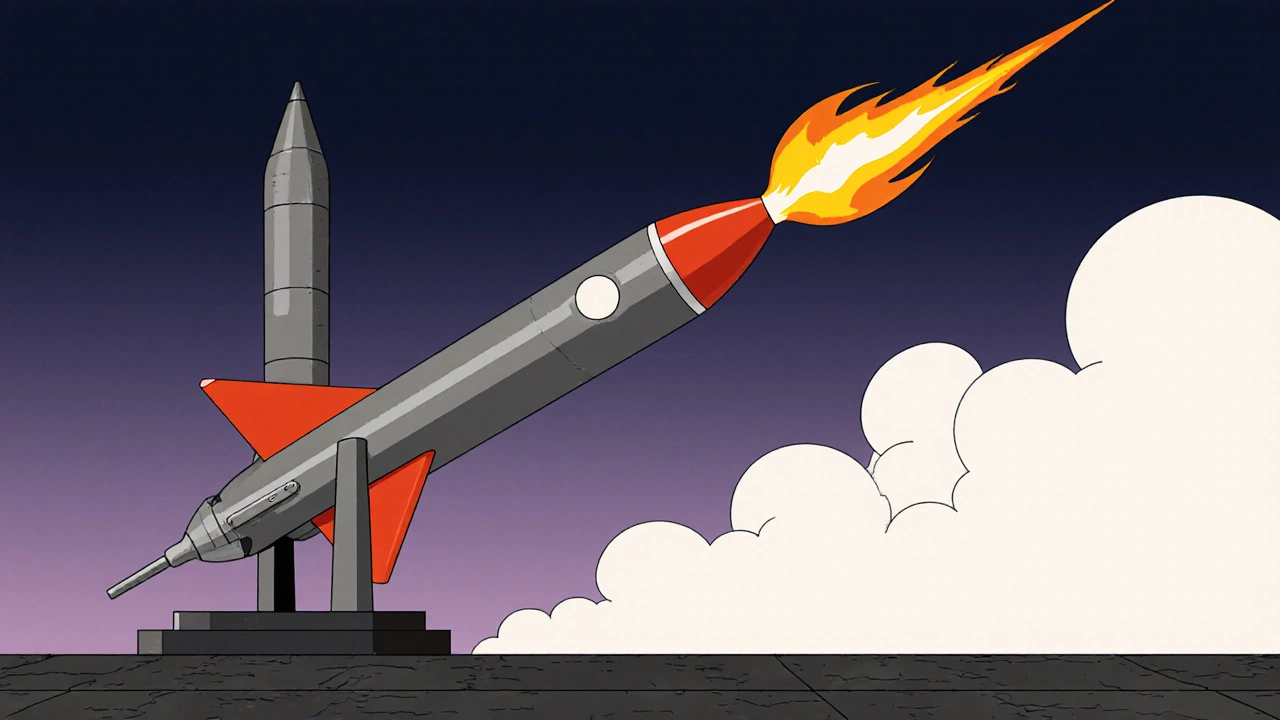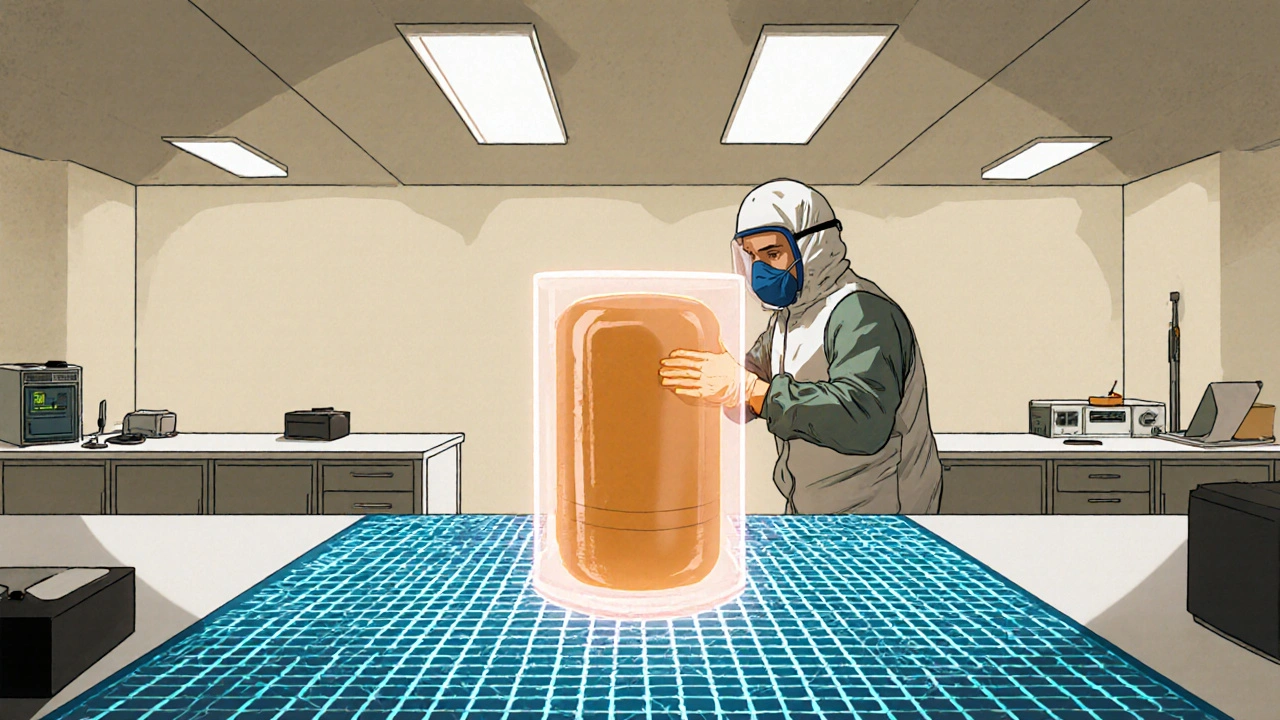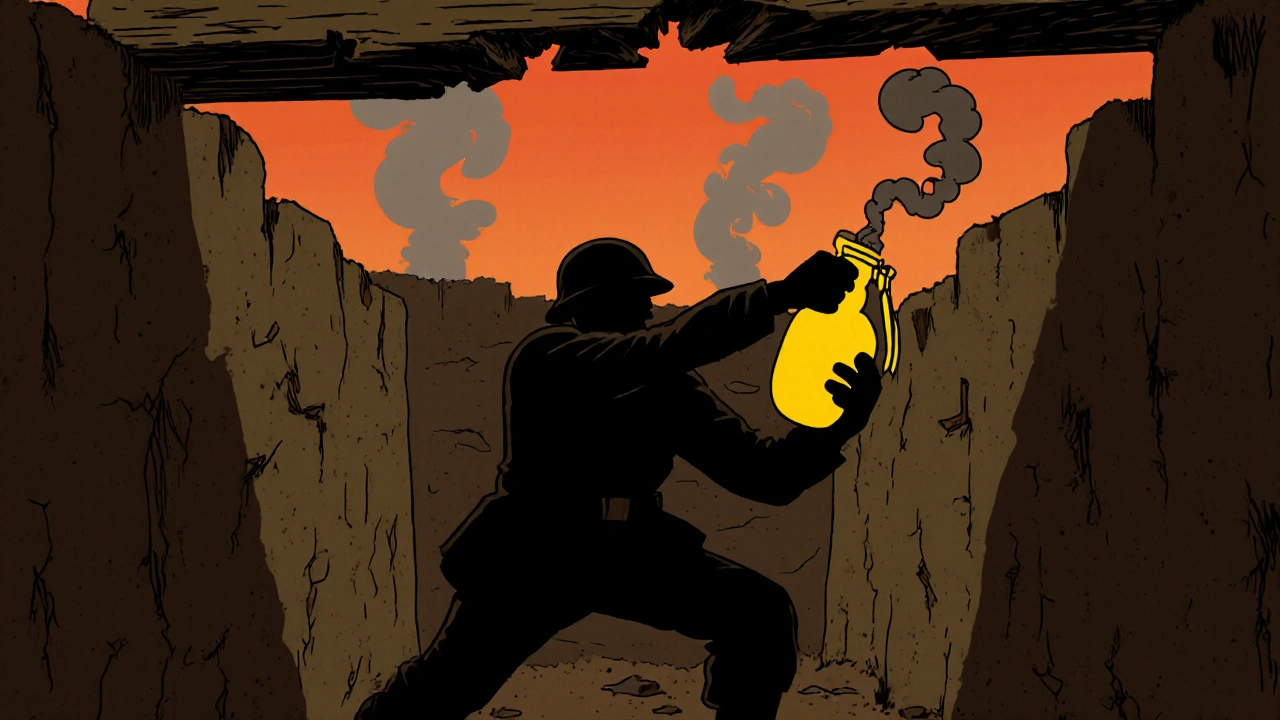Military Explosive Performance Calculator
Military Explosive Performance Calculator
Compare the performance characteristics of nitroglycerin, TNT, and RDX for military applications. Adjust parameters to see how different factors affect explosive performance and safety.
Energy Output
Safety Rating
| Property | Nitroglycerin | TNT | RDX |
|---|---|---|---|
| Detonation Velocity (m/s) | 7,700 | 6,900 | 8,750 |
| Sensitivity Rating | 8.5 | 2.0 | 6.5 |
| Energy Output (MJ/kg) | 6.4 | 4.6 | 7.1 |
| Typical Applications | Propellant plasticizers, liquid charges | Artillery shells, naval mines | Composition explosives, shaped charges |
From the muddy trenches of World War I to the precision‑guided munitions of today, one chemical has quietly shaped how armies deliver power: nitroglycerin. This article tracks its journey, explains why it mattered, and shows where it sits in today’s Arsenal.
What is nitroglycerin?
Nitroglycerin is a highly energetic, oily liquid made by nitrating glycerol with a mixture of nitric and sulfuric acids. It detonates at roughly 7,700 m/s, making it one of the most powerful liquid explosives known.
Understanding military explosives
Military Explosives refer to materials designed for use in weapons, demolition, or propellant systems, optimized for stability, energy density, and controllability.
Early adoption: World War I and the birth of modern grenades
The first large‑scale military use of nitroglycerin came through Dynamite, a pressed mixture of nitroglycerin absorbed in a porous material, invented by Alfred Nobel in 1867. Militaries quickly adapted dynamite for demolition and trench‑clearing charges.
By 1915, the British and French were packing gelatinized nitroglycerin (gelignite) into hand‑thrown grenades. The high brisance (shattering power) of nitroglycerin gave early grenades a lethal radius unheard of with older black‑powder devices.
Interwar advances: From smokeless powder to high‑explosives
After the war, the push for safer, more stable explosives led to the development of TNT, a low‑sensitivity compound that could be safely stored and transported. While TNT became the workhorse of artillery shells, nitroglycerin remained valuable as a component of composite explosives.
Another milestone was the creation of RDX, a powerful nitroamine that offered higher detonation velocity (8,750 m/s) and was less sensitive than pure nitroglycerin. Yet, nitroglycerin still served as a plasticizer in many formulations, improving flexibility and performance.

World War II: Nitro‑propellants and rocket thrust
During the 1940s, nitroglycerin found a new role as a key ingredient in double‑base propellants. These propellants combined nitroglycerin with nitrocellulose, delivering both the rapid gas generation of the former and the structural strength of the latter.
German V‑2 rockets, for instance, used a mixed propellant where nitroglycerin contributed roughly 30 % of the total energy, enabling thrust levels far beyond conventional gunpowders.
Meanwhile, gelignite‑filled demolition charges continued to be used for sabotaging bridges and railways, illustrating nitroglycerin’s versatility across both explosive and propellant domains.
Cold War and the missile age: Nitroglycerin as a propellant staple
In the post‑war era, the United States and USSR refined double‑base formulations for artillery, tank guns, and missile rockets. The term “rocket propellant” now often implied a nitroglycerin‑rich mixture, prized for its high specific impulse.
Notable examples include the U.S. Navy’s RIM‑162 Standard Missile, whose solid‑rocket motor relied on a nitroglycerin‑based binder to achieve reliable burn rates under extreme temperatures.
Even conventional mortar rounds began to incorporate small percentages of nitroglycerin to boost performance without sacrificing safety, demonstrating an ongoing trade‑off between power and handling risk.
Modern battlefield: Precision, safety, and new formulations
Today, nitroglycerin’s role has shifted toward niche applications. In guided munitions, engineers embed nitroglycerin‑derived plasticizers into warhead liners to fine‑tune shock wave shaping, improving penetration against armored targets.
Emerging “insensitive munitions” (IM) standards require that explosives resist accidental detonation. To meet these criteria, designers blend nitroglycerin with less sensitive compounds-creating composites like PBX‑9502 (a nitroglycerin‑based polymer‑bonded explosive) that satisfies high energy needs while complying with safety regulations.
Beyond weapons, nitroglycerin‑based propellants power some modern artillery and rocket‑assisted projectiles, thanks to their predictable burn characteristics and ability to be molded into complex grain geometries.

Safety, handling, and regulation
Because pure nitroglycerin can detonate from shock or heat, strict protocols govern its storage. Modern depots use temperature‑controlled vaults, vibration‑isolated pallets, and continuous monitoring systems to detect any exothermic spikes.
When used in composite forms, the surrounding matrix (often a polymer binder) dramatically reduces sensitivity. Nonetheless, personnel handling nitroglycerin‑laden munitions wear anti‑static gear and follow a “no‑impact” policy during loading and transport.
International treaties, like the Convention on Certain Conventional Weapons (CCW), classify high‑energy liquid explosives, prompting many armies to document, track, and eventually phase out legacy nitroglycerin stockpiles in favor of newer, less hazardous alternatives.
Quick comparison: Nitroglycerin vs. TNT vs. RDX
| Explosive | Detonation Velocity (m/s) | Sensitivity | Typical Use |
|---|---|---|---|
| Nitroglycerin | 7,700 | High (shock‑sensitive) | Liquid charges, propellant plasticizers |
| TNT | 6,900 | Low | Artillery shells, naval mines |
| RDX | 8,750 | Medium‑high | Composition explosives, shaped charges |
Key takeaways
- Nitroglycerin’s extreme energy makes it valuable for both explosive and propellant applications.
- Its high sensitivity led to the development of safer composites and modern “insensitive munitions.”
- Throughout the 20th century, nitroglycerin transitioned from hand‑thrown grenades to rocket propellants and precision warhead liners.
- Current military use focuses on blended formulations that balance power with stringent safety standards.
Frequently Asked Questions
Why was nitroglycerin chosen for early grenades?
Its liquid state allowed designers to gel it with inert fillers, creating a compact, high‑brisance charge that could be safely handled in a solid form while still delivering a powerful blast.
How does nitroglycerin differ from TNT in performance?
Nitroglycerin detonates faster (≈7,700 m/s vs. 6,900 m/s for TNT) and releases more energy per kilogram, but it is far more shock‑sensitive, making TNT preferable for large‑scale munitions where safety is paramount.
What is a double‑base propellant?
A propellant that blends nitroglycerin (the ‘base’) with nitrocellulose. The mixture provides both rapid gas generation and structural integrity, ideal for rockets and high‑performance artillery.
Are modern militaries still stockpiling pure nitroglycerin?
Most forces have phased out pure nitroglycerin due to safety concerns. It now appears mainly within stabilized composites or as a component in propellant blends.
How does nitroglycerin contribute to “insensitive munitions”?
When bound in polymer matrices (e.g., PBX‑9502), nitroglycerin’s explosive power is retained while the surrounding polymer absorbs shock, meeting strict IM criteria for reduced accidental detonation.

Ashok Kumar
October 21, 2025
Wow, nitroglycerin’s life story reads like a dramatic movie, doesn’t it? I get why historians love it – it’s both powerful and fragile. Still, you have to wonder why anyone would trust a liquid that can explode from a bump. Guess that’s why they keep it in fancy temperature‑controlled vaults.